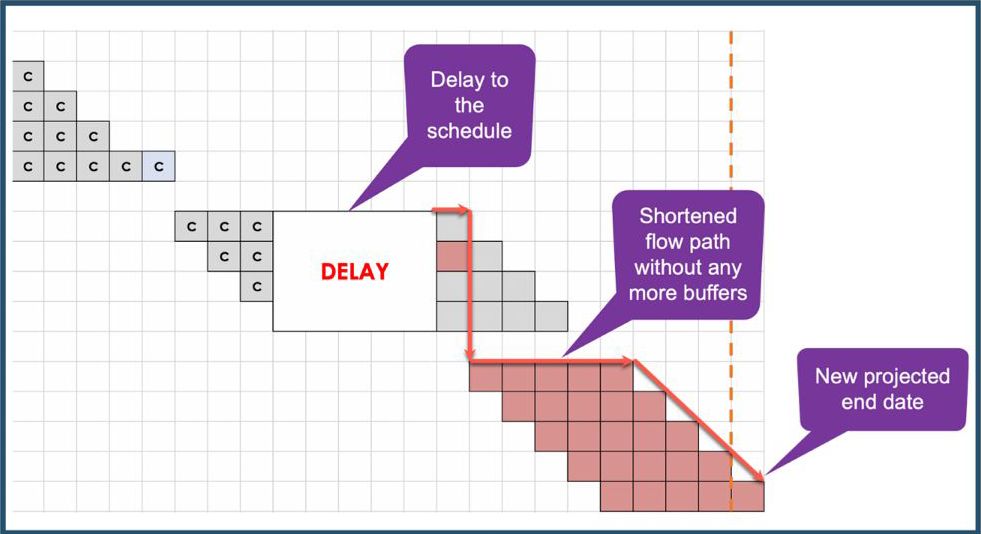Submitting A Delay
The time impact analysis review would show the impact and the critical flow path after the impact, and each of the following reviews would be done to verify the critical flow path past the delay:
- A review of the dependence of the delay on successor activities, work packages, and wagons.
- A review of the lob for all phases. The realized flow potential percentage for all phases must be between 45% and 100% for it to be considered optimized.
- A review of all base sequences in all phases to make sure they have been coordinated, parallelized, and optimized for accurate durations.
- A review will be done of all phase buffer durations to ensure there is a logical relationship between the anticipated normal risks of the phase and the number of buffers for that phase. If there are more buffers than needed, they must be removed to be considered critical.
If the connection between the start or ntp milestones, non-repetitive sequences, lines of balance, phase sequences, buffers and interdependence ties to the substantial completion milestone are confirmed to be reasonable and within the specified parameters, the delay shall be considered reasonable.

This path of critical flow now enables you to submit a delay to the owner if it cannot be absorbed and it changes your end date. Simply follow these steps.
Process for showing or submitting a delay:
1. Ensure your takt schedule is current and correct for thefollowing:
- Start Date
- Current Date
- Substantial Completion Date
- Phase Sequences
- Phase Buffers
- Interdependence Ties
2. Identify what impact the delay has on the project by showing it in the schedule without trade stacking or trade burdening.
3. Ask the following questions to see if there is a way to absorb it:
- Can the team use a phase buffer?
- Can the team use other buffers in the sequence?
- Can the team use any of the delay strategies?
- I. Stop the takt phase & swing to workable backlog.
- II. Stop the takt phase, wait, & prepare.
- III. Pull the delayed work out of the takt plan & onto a separate pull plan or scrum board.
- IV. Pull the car out of the takt train & onto its own takt time.
- V. Recover within the wagon or box car.
- VI. Swarm the delay with swing capacity.
- VII. Can the team stack the sequences and procure additional resources to complete the work?
4. If all possible strategies have been exhausted, then a time impact analysis would be created with the following components:
- Summary of the impact.
- Printout of the entire schedule.
- Window showing the impact and how it affects the end date.
- Mitigation methods the project team has attempted to fix the issue.
- An analysis of the critical flow path.
- Description of requested time and cost.
- A list of all other known options to mitigate the problem.